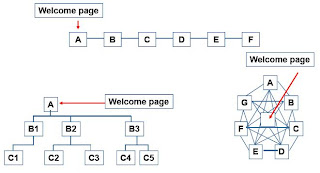here is an article about information design that I found on Internet....wanna share it with u guys....=)
Published on May 21, 2003
Aside from people, information is the single most valuable asset for business. At every level, in every department, for every company, information is critical. The better the information, the more successful the company and the people within it can be. Improving products and services, understanding markets, improving internal process and communication—information is the catalyst that allows people to see the best course and to make substantive change, as well as often being the deliverable itself.
More than its value to business, information is also the principle component to human knowledge and progress. By experiencing information—through any of the available senses—people are able to build knowledge. Particularly when the information is relevant and good, people are able to make better decisions, to be more effective, to be happier and to increase their well-being.
That is why information is so critical to business. The better the information, the better the business. The better the information, the better the people. The better the business and people, the more profitable the business can be.
Information Design is dedicated to making information as effective as possible. Effective is a carefully chosen word here. In order to be as effective as possible, information must carefully balance a variety of factors, including, but not limited to clarity, relevance, timeliness, amplitude, volume, and differentiation.
Different practitioners and groups from disciplines like graphic design, information architecture, and writing have explicitly or implicitly laid claim to the term Information Design, or to being the best discipline for producing more effective information. The reality is that Information Design is a careful balance of those disciplines and not the domain of any one.
As information is the most critical non-human contributor to achieving business goals, and is the key component to building human knowledge and increased success, the discipline dedicated to making information as effective as possible is naturally the meta-discipline for business.
And that is Information Design.
Information Design and Web development
Information Design is geared toward information solutions in general—as opposed to Web solutions in particular. That broader understanding of the dynamic inter-relationship of the myriad contexts, strategies and tactics pertaining to the creation of successful information is invaluable. It is also particularly relevant in providing excellent direction for Web development. Information Design is critical to better Web development in the following four ways:
1. Information Design clarifies goals and objectives
Clients often know what they want but rarely understand what they need. Requests for functionality ranging from live chat to online stores to sophisticated content management functionality may not help the client achieve their business goals. Web design professionals are obligated to focus on the business goals of their clients and make recommendations that are in the client's best interests.
Information Design grounds that consultation and planning process. By approaching the Web project as an information solution, among the galaxy of information solutions and organizational realities that face clients, developers are equipped to design a Web site or application that best contributes to their business success.
2. Information Design provides a broader context
Even for modest static sites, good Web design is relatively involved and complicated. In any effort to successfully navigate the development process, it is simple to lose sight of the relationship between the project itself and the broader context, including:
- The original business goals that led to the site being created or modified
- The client’s unique position now, the position they want to be in later, the other tactics that they have or are planning to initiate, and how all of those factors juxtapose with the Web tactic itself
- Those same factors in the client’s competition
- The unique position of the client’s current and potential customers, as well as employees, communities and key stakeholders, and how those groups juxtapose with the Web tactic itself
These are largely strategic concerns that need to be factored in at the beginning of a Web development project, then monitored and considered throughout the project lifecycle. However, those considerations are not the sole domain of the project leaders or strategists. Information Design requires that all team members have an acute awareness of the broader contextual concerns that resulted in this tactic being selected in the first place, and that awareness must be balanced and addressed in the final deliverable. Awareness and acknowledgement of these considerations—even by the most tactical and production-oriented of the team members—provides immeasurable added value and the highest likelihood that the final deliverable will be as effective as possible.
3. Information Design balances the various specialties that participate in Web development
Inevitably, most Web designers or Web development companies have their own particular specialties. Whether in the structure and content, the interface design, the application development—or any sub-specialty therein—it is apparent from the final product that there is a bias toward the comfort level or organizational strengths of the producers.
Information Design as a discipline insists that the focus remain on making the information—with information in this case being the final Web site—as effective as possible. Applying this to the design itself can manifest in a few different ways and is best if all occur together:
- By assigning someone not on the core production team as the Information Designer or Director (or really any title you prefer) to ensure the final deliverable is appropriately balanced
- By providing all team members with a short list of essential elements that would contribute to successful Information Design for this unique project, in order to guide their thinking and production
- By insisting on collaboration and cross-pollination of team members from different disciplines, to give them a better sense of the why, how and what each other is doing
By proactively balancing the different components and specialties, you will best be able to achieve the goals and objectives of the project, with the final product thus proving as effective as possible.
4. Information Design focuses on the dynamic nature of strong Web development
The most effective Web development is that which stakes out the strongest position between a myriad of considerations, including:
- The articulated goals of the project
- The client’s internal situation
- The client’s market situation
- The target audiences
- The project budget
- The available technologies
- The composition and capability of the development team
During the development process, it is easy to lose sight of one or many of these key components, and the project suffers for being too close to some of the considerations and too far from others.
As such, a strong process naturally incorporates a healthy and regular mechanism for balancing the different considerations. Information Design requires that the core considerations that guide the project be far forwardthroughout the project lifecycle, ideally incorporating research and actual testing where appropriate. This will ensure that the final deliverable achieves the proper balance to maximize effectiveness and business success.
Think on an Information Design level, not a Web development level
Everyone has their unique background and area of specialty. Within each of the core disciplines is a wealth of established practices and processes that contribute to great work. Focusing on doing your part on a strong Web development team can certainly take the team—and the product—a long way.
But even if you are doing great work, are you best achieving the business goals of your clients? Are you considering the inter-relationship between this Web development project and their traditional methods for sales and marketing, or their traditional communication channels, or their traditional workflow patterns? Do you appreciate the dynamic relationship that this has to that and inform all of your production decisions from that perspective? Are you cognizant that, rather than building a Web site, you are building an information solution?
Information Design positions you to answer all of those questions in the affirmative. It positions you to do work that is not only “great” from an objective perspective as evaluated by your peers, but from the more important subjective perspective of your clients and the health of their business. The work that you do is far more broad and important than you might realize. You just need to stand back, look at it from the proper perspective and take advantage of it.









